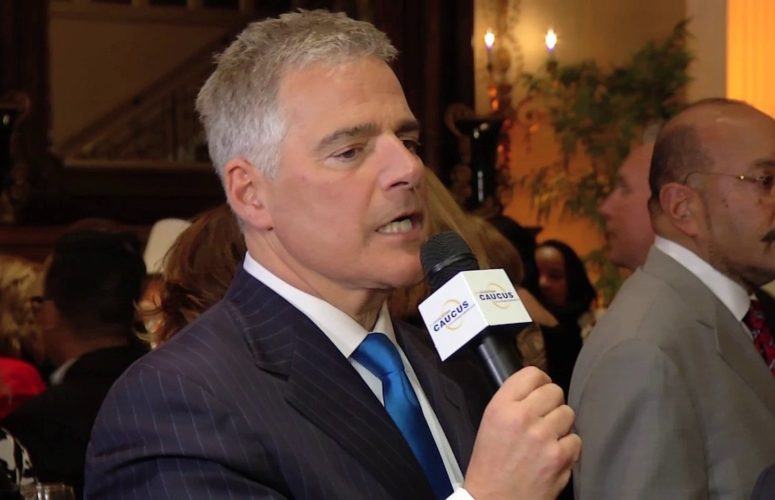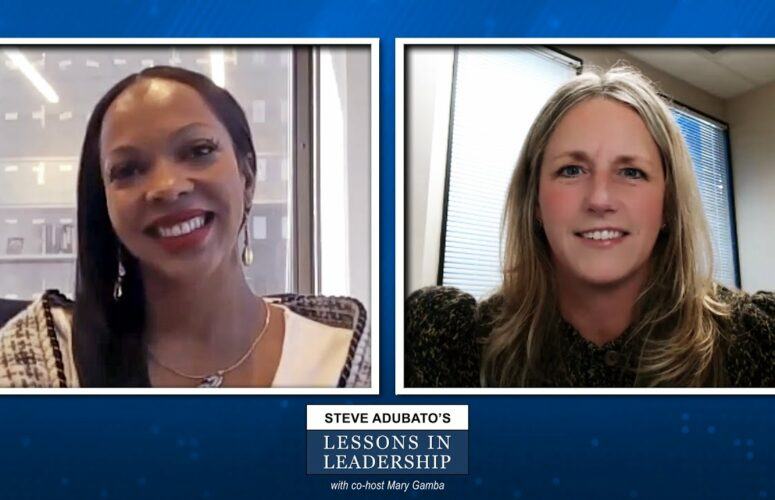LESSONS IN LEADERSHIP: TAMMY GARNES MATA AND BRENDAN GILL WITH ALIXON COLLAZOS
By Steve Adubato, PhD On Oct 27, 2022On this edition of Lessons in Leadership. Steve Adubato and Mary Gamba are joined by Tammy Garnes Mata, Chief Diversity & Inclusion Officer, Valley Bank, about integrating diversity and inclusion into the DNA and culture of an organization to create a positive, innovative and inclusive workforce. Then, Steve and Mary talk with Brendan Gill, CEO/President, The BGill Group and Alixon Collazos, Senior Partner, The BGill Group about the importance of relationship building when building a brand.
Let’s talk leadership and confidence. According to successful entrepreneur Francisco Dao; “Self-confidence is the fundamental basis from which leadership grows. Trying to teach leadership without first building confidence is like building a house on a foundation of sand. It may have a nice coat of paint, but it is ultimately shaky at best.”
I’ve been coaching and teaching about leadership for well over two decades, focusing on such topics as; effective presentations, leading and facilitating engaging meetings, artfully but directly confronting difficult issues and circumstances, accepting and receiving feedback, as well as a variety of other leadership-related matters. One area that is tied closely to many of these coaching areas is confidence and its connection to great leadership. Yet, it is impossible to feel confident in every situation or circumstance you face. Nobody is confident 100% or even 99% of the time. In fact, when people say they are that supremely confident, I am a bit skeptical.
When it comes to leadership, confidence can be fleeting and, at times, confounding. With that in mind, consider some tips and tools related to confident leadership:
- Be humble and self-aware. A leader who communicates with arrogance and defensiveness and believes he is always right, and refuses to admit his mistakes while blaming others, is not a confident leader. Instead, a confident leader is self-aware, humble, and not afraid to admit when he or she makes a mistake and never points a finger at others.
- Be agile. Confidence comes with ebbs and flows, even with the best in their respective field. It’s not that confidence is like a light switch that goes on and off, but there are degrees of it in certain situations that is based largely on how a leader (or any person) chooses to see themselves in a particular situation.
- Confidence is a mindset. While confidence is a product of consistent success and receiving positive feedback, as leaders we need to put ourselves in a more confident frame of mind, even without the benefit of recent success or recognition from others. We need to train our mind to view virtually any situation or challenge as an opportunity to confidently deal with it and be at our best, knowing that mistakes and mishaps are just part of the process.
- It takes a village. Confident leaders surround themselves with a confidence support system of colleagues, friends, family, or other mentors. Even those who see themselves as confident sometimes need to have their confidence bolstered by others they trust and respect. At times, when you are scared, insecure, vulnerable, or convincing yourself that you just don’t have what it takes to succeed, it takes someone in your personal or professional orbit to help lift you up and remind you of the leader you truly are.
- Accept that “loss” is unavoidable. As leaders, we all want to “win,” whether that means landing that dream job, securing a big client or simply having your CEO tell you, “Job well done!,” after a presentation you gave at a board meeting. Our confidence is bolstered with such positive feedback. However, as leaders, we must accept that “loss” is inevitable. What matters in these situations is that we don’t let the situation define us or our effort. Instead, we can again find our confidence by choosing how we view the situation and then putting a plan in place to move forward.
Bottom line? Confident leaders consistently strive to be the best they can be, knowing that perfection doesn’t exist, but progress and growth is the ultimate goal.
Related Articles:





